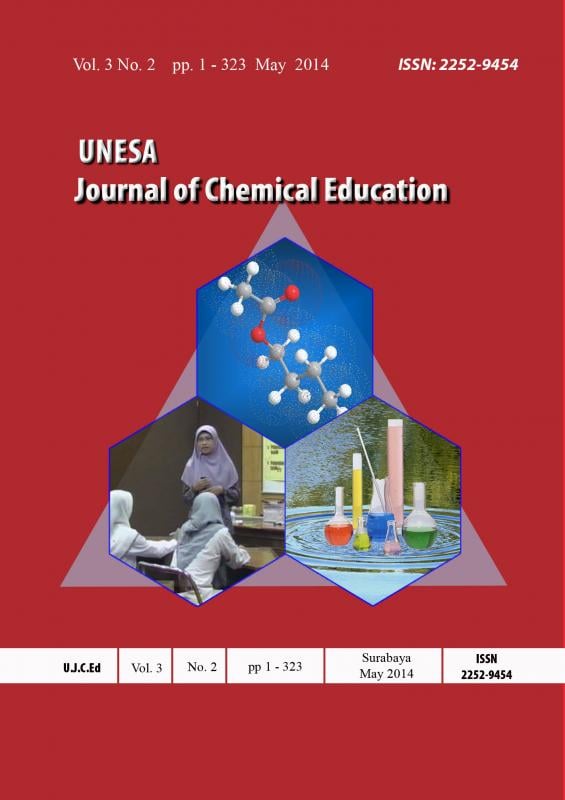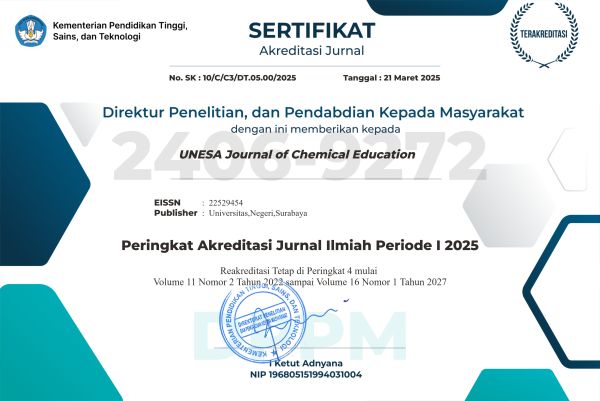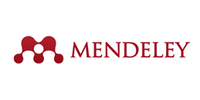DOI:
https://doi.org/10.26740/ujced.v3n2.p%25pAbstract
Penelitian ini bertujuan untuk mengetahui kelayakan media pembelajaran blog “Guided-ChemBond” yang dihasilkan melalui keefektifan penggunaan media pembelajaran blog “Guided-ChemBond” pada pembelajaran jarak jauh. Penelitian ini menggunakan metode penelitian dan pengembangan (Research and Development/R&D). Sasaran penelitian ini adalah siswa kelas X SMAN 12 Surabaya. Instrumen penelitian yang digunakan, antara lain: lembar telaah, lembar validasi, lembar angket respon siswa, lembar observasi aktivitas siswa, dan lembar tes hasil belajar. Hasil penelitian ini menunjukkan bahwa (1) blog “Guided-ChemBond” layak digunakan dan memiliki potensi menciptakan pembelajaran yang efektif dalam lingkungan pembelajaran jarak jauh. Hal ini dibuktikan dengan tercapainya ketuntasan secara klasikal (80%) setelah menggunakan blog “Guided-ChemBond” sebagai media pembelajaran.
Kata Kunci: Pembelajaran jarak jauh, blog, ikatan kimia
This study aims to determine the feasibility of instructional media blog "Guided-ChemBond" produced throught the effectiveness of the use of instructional media blog "Guided-ChemBond" in distance learning. This study uses research and development (Research and Development/R&D) method. The subject of this study is students of class X SMAN 12 Surabaya. The research instrument used, included: review of sheets, validation sheets, questionnaire sheets of student responses, observation sheets of student activity, and achievement test sheets. The results of this study showed that blog "Guided-ChemBond" feasible to use in distance learning and has the potential of creating effective learning in the environment internet-based learning (e-learning). This is proved by the achievement of mastery in the classical (80%) after using the blog "Guided-ChemBond" as a instructional media.
Keyword: Distance learning, blog, chemical bonding
Downloads
Downloads
Published
Issue
Section
License
The license terms of the Creative Commons Attribution-NonCommercial 4.0 International (CC BY-NC 4.0) requires attribution to the original creator, permits non-commercial use, and does not allow for the application of legal or technological restrictions on others' use.
 Abstract views: 37
,
Abstract views: 37
, PDF Downloads: 76
PDF Downloads: 76













